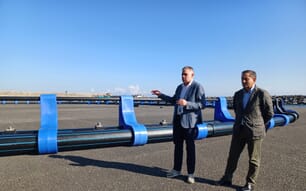Tuna is a major seafood export from the country, along with shrimp and tra fish, which are the three products selected to organize production in value chain.
A conference to discuss solutions on organizing tuna production in the value chain was recently organized by the Ministry of Agriculture and Rural Development (MARD) in Khanh Hoa province.
The fishing port of Phu Yen province, was where tuna exploitation began in Viet Nam. Tuna is sold to freezer factories at VND73,000 per kilogram, while tuna meeting the Sashimi quality for fresh export to Japan is priced at VND195,000 per kilogram, three times the price, against that sold in Viet Nam.
The process involved in catching to exporting is real value chain. However, in the past the chain has been interrupted.
The fishermen are hesitant to invest in the necessary technology because they can easily sell their tuna by total weight to local buyers without the same quality tests demanded in the overseas markets, without having to make the investment.
“Building supply chain networks is unchartered territory for the locals, but something very much established in developed countries. Producers, suppliers of services and consumers need to connect with each other with commitment and/or legal contracts, which fishermen and businesses haven’t been in the habit of doing in Viet Nam. If the different participants don’t commit with each other and don’t stipulate clearly the responsibilities of related partners and only deal with problems through arbitration courts, it will be difficult for us to have developed production and the fishermen will suffer disadvantages,” said Mr Pham Ngoc Tuan, Deputy Head of the Department of Capture Fisheries and Resources Protection.
Production in the value chain is not a new problem, but has been coined for a long time. It is said that while there are many drawbacks in exploiting tuna such as planning, exploitation technology, preservation and marketing organization,there can be effective tuna production organization in value chain.
"The chain is a continuum, which can’t be cut off. It must be managed by the MARD and provincial people’s committees so that it can operate fluently,” said Mr Vu Dinh Dap, Chairman of Viet Nam Tuna Association.
The country now has more than 3,500 ships catching tuna with 35,000 laborers. Tuna production organization in the value chain aims to improve the standard of living for those fishermen, who are also the target the government policies to support them.
According to Mr Cao Duc Phat, Minister of MARD, in order to benefit from the value chain, we have to clarify the objectives: what do we build iron ships to do? What improvements do we need to do to ships to ensure they are capable? What alternate fishing techniques need to be employed All aim to improving the standard of living for fishermen and are the foundation for the implementation of other goals. Improving living standards through improving the efficiency of tuna fishing and the efficiency of tuna processing and consumption, through helping fishermen have better technology and more effective shipping with fixed points of sale.
To produce tuna in the value chain, the development of a modern fishing fleet, combined with marketing solutions and the construction of logistic fisheries services should be implemented uniformly.
Tuna is considered a global commodity and high in both exploitable reserves and market demand. The organization of tuna production in the value chain means the development of a spearhead marine economic sector and improvement in the quality of life of fishermen.




